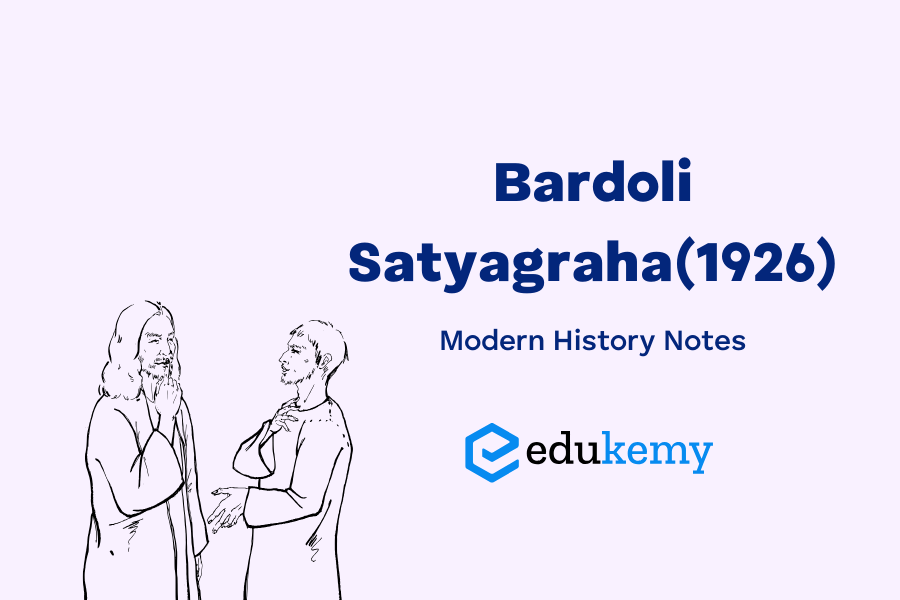- The Bardoli Satyagraha took place in 1926 in the Bardoli taluka of Surat district. It witnessed a high level of political mobilization following Mahatma Gandhi’s emergence on the national political scene.
- The movement began in January 1926 when the British government decided to raise land revenue by 30% in the Bardoli taluka. Congress leaders swiftly protested, leading to the formation of the Bardoli Inquiry Committee to investigate the issue.
- The committee concluded that the increase in land revenue was unjustified. In February 1926, Vallabhbhai Patel was appointed to lead the movement, and he was given the title “Sardar” by the women of Bardoli.
- Under Patel’s leadership, the Bardoli peasants decided to refuse payment of the revised assessment until the government either appointed an independent tribunal or accepted the existing amount as full payment.
- By August 1928, tensions had escalated significantly in the area, and there were discussions of a potential railway strike in Bombay. In anticipation of a potential emergency, Gandhi arrived in Bardoli.
- As the situation intensified, the government sought a graceful resolution. They stipulated that all occupants must first pay the increased rent, although this was not actually enforced. Subsequently, a committee was appointed to investigate the matter and it concluded that the 30% revenue increase was unwarranted. Instead, it recommended a much lower increase of 6.03 per cent.
FAQs
Q: Can you provide a short note on the Bardoli Satyagraha?
A: The Bardoli Satyagraha was a peasant movement that occurred in 1928 in Bardoli, Gujarat. It aimed to protest against the oppressive land revenue policies imposed by the British colonial government. Led by Sardar Vallabhbhai Patel, the movement involved non-violent resistance and civil disobedience, eventually leading to a compromise with the government and a reduction in land taxes.
Q: Who was the leader of the Bardoli Satyagraha?
A: The Bardoli Satyagraha was led by Sardar Vallabhbhai Patel, who later became the first Deputy Prime Minister and Minister of Home Affairs of independent India.
Q: What were the significant events of the Bardoli Satyagraha in 1928?
A: In 1928, the Bardoli Satyagraha saw the local farmers, led by Sardar Vallabhbhai Patel, refusing to pay the excessive land taxes imposed by the British authorities. The movement gained widespread support, and after a long and intense struggle, a compromise was reached, leading to a reduction in land taxes.
Q: Bardoli Satyagraha ko Hindi mein kaise vyakt kiya jata hai?
A: बरड़ोली सत्याग्रह को “बरड़ोली सत्याग्रह” कहा जाता है।
In case you still have your doubts, contact us on 9811333901.
For UPSC Prelims Resources, Click here
For Daily Updates and Study Material:
Join our Telegram Channel – Edukemy for IAS
- 1. Learn through Videos – here
- 2. Be Exam Ready by Practicing Daily MCQs – here
- 3. Daily Newsletter – Get all your Current Affairs Covered – here
- 4. Mains Answer Writing Practice – here

